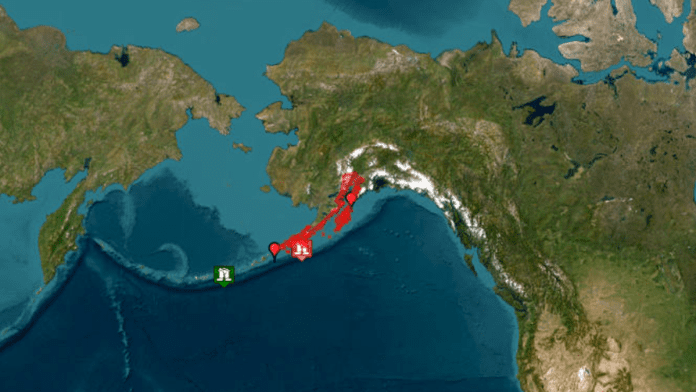🕒 Last updated on July 17, 2025
On a quiet Wednesday afternoon, terrifying sirens shattered the calm in parts of central Alaska.
Sudden Earthquake Sparks Chaos and Panic
At exactly 12:38 p.m. local time, a powerful 7.2 magnitude earthquake struck about 50 miles south of Sand Point. Within moments, it was upgraded to a 7.3 magnitude quake. This earthquake set off immediate tsunami warnings across South Alaska and the Alaska Peninsula.
Residents were alerted about the possibility of a tsunami at any time by the deafening sirens that reverberated throughout towns. People living near the coast scrambled to get to higher ground. Emergency instructions were clear: leave now, do not wait. Entire communities were thrown into action as the risk of flooding and dangerous waves became very real.
The U.S. National Tsunami Warning Center quickly confirmed the threat. They said a tsunami was expected to hit areas like Sand Point, Cold Bay, and Kodiak. The first tsunami waves were predicted to arrive by 1:16 p.m., giving locals less than an hour to evacuate.
The quake’s epicenter was deep under the sea, about 22 miles below the surface. It struck close to the Alaska Maritime National Wildlife Refuge—a place known for its remote beauty and wildlife. But on this day, nature showed its frightening side.
Communities Race to Safety as Warnings Spread
As news of the tsunami threat spread, people living near the water rushed to evacuate. Cars lined roads leading to higher elevations. Parents grabbed their children, and shopkeepers closed stores mid-day. The sirens’ constant wailing served as a terrifying reminder that time was running out.
Authorities didn’t waste time. They issued urgent warnings, telling everyone to leave beaches, harbors, and low-lying areas immediately. People were also told not to return until officials gave the all-clear. Even after the first wave, more dangerous ones could follow. In fact, later waves are often bigger and deadlier than the first.
Emergency officials explained that strong currents, floating debris, and repeated wave hits could go on for hours. The situation was far from over, and safety remained the top priority.
Several towns were at high risk. Sand Point, Cold Bay, and Kodiak were named among the most vulnerable. These coastal areas were expected to feel the full force of the tsunami’s power.
The potential of a tsunami was still developing even though there were no immediate fatalities or significant damages from the earthquake. Teams on the ground, along with weather experts and the Coast Guard, continued to monitor everything closely.
Tsunami Risk Expands as Authorities Stay on High Alert
The impact of the earthquake was felt beyond Alaska. In Washington state, emergency officials began reviewing what the tsunami warnings meant for their own coastlines. They were in close contact with the National Tsunami Warning Center, preparing for any possible alerts or action needed on the West Coast.
A press conference was announced for later in the day. Representatives from emergency services, the Coast Guard, and weather centers were set to address the public. They planned to share updates and safety advice during a teleconference scheduled for 4:30 p.m. Pacific Time.
Alaska in crosshairs: Russian Su-57 jets circle as U.S. relies on 1970s radar tech
For now, the focus remains on keeping everyone safe. Residents are being told to stay tuned to local alerts and not return to risky areas until they’re cleared. Tsunamis can cause destruction without warning, and being cautious is the only way to stay protected.
A Richter scale earthquake that is between 7.0 and 7.9 is considered extremely dangerous, according to Michigan Technological University. Only about 10 to 15 such quakes happen in the world each year. Wednesday’s event in Alaska was one of them and its aftermath is still unfolding.
As of now, there are no official reports of injuries or large-scale property damage. But the sirens, the rush to evacuate, and the fear in the air have left a lasting impact on the communities affected. The people of Alaska are now waiting and hoping for the danger to pass.

